Eagle-Bearers in the Roman Army
£3.00
When Caesar first arrived at the Kent coast in 55 BC and was ready to land his troops on the beach his soldiers refused to leave their ships because they had to jump into deep water. One soldier, an eagle-bearer, persuaded the other soldiers to jump into the deep water.
An eagle-bearer is the soldier chosen to carry a legion’s gold eagle. Eagle-bearers were important during battles because they were used to communicate orders to the soldiers. When the eagle-bearer told the soldiers to jump into the water during Caesar’s invasion, they all obeyed him and he saved the day.
As well as English and history skills the Evidence-Based Learning skills developed in this lesson include collaborative learning and metacognition. This lesson also offers pupils the opportunity to master peer teaching.
Description
Each evidence-based learning (EBL) Roman history resource in this set is a complete lesson which uses the history curriculum as a framework through which each of the eight EBL skills can be mastered. Each resource has “mastering” one EBL skill as its central focus and all eight EBL skills are covered more than once in these lessons.
All eight EBL skills are better gained working with a partner so much of the work in these lessons is collaborative. These resources will ensure that pupils can master and use EBL skills regardless of their ability.
Each Roman history lesson will develop a single EBL skill through:
1) A “Before You Start” page that introduces the EBL skill.
2) Opportunities to master this skill during the lesson.
3) An “After You Finish” page that offers pupils the chance to evaluate their learning experience (of the lesson and the EBL skill) and to identify their next step in using the EBL skill.
The skills in bold below are all the EBL skills developed in this Roman lesson. Click on each skill to learn more about that skill.
- Collaboration
- Thinking Skills
- Peer Assessment
- Peer Teaching
- Self-Assessment
- Metacognition
- Self-Regulation
- Independent Learning
1 review for Eagle-Bearers in the Roman Army
Only logged in customers who have purchased this product may leave a review.
Related products
-


Caesar’s Own Account of the Invasion
£3.00 Add to basket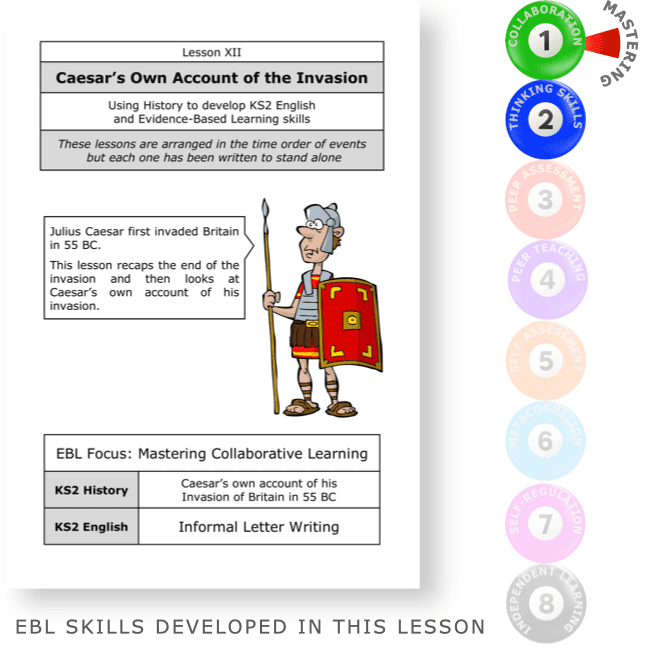 £3.00Add to basket
£3.00Add to basketJulius Caesar first invaded Britain in 55 BC. This lesson recaps the end of the invasion and then looks at Caesar’s own account of his invasion.
As well as English (writing an informal letter) and history skills the Evidence-Based Learning skills developed in this lesson includes thinking skills. This lesson also offers pupils the opportunity to master collaborative learning.
VIEW -


Caesar Forgot His Umbrella
£3.00 Add to basket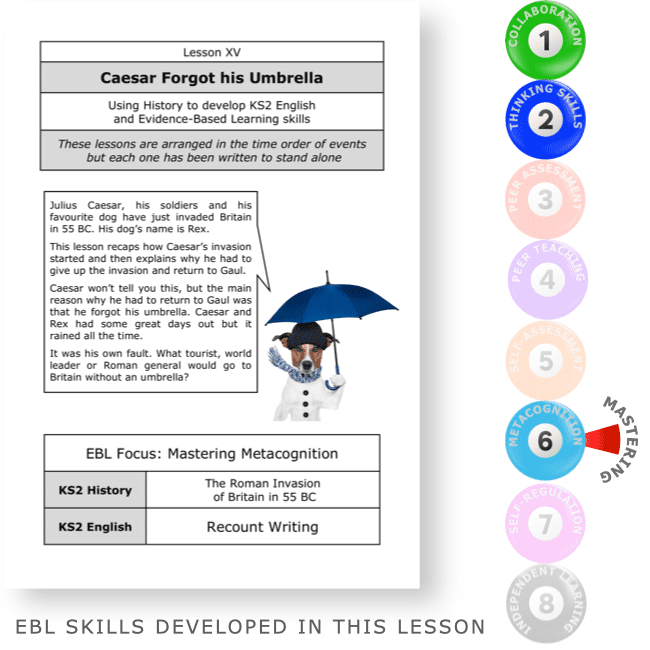 £3.00Add to basket
£3.00Add to basketJulius Caesar, his soldiers and his favourite dog have just invaded Britain in 55 BC. His dog’s name is Rex. This lesson recaps how Caesar’s invasion started and then explains why he had to give up the invasion and return to Gaul.
Caesar won’t tell you this, but the main reason why he had to return to Gaul was that he forgot his umbrella. Caesar and Rex had some great days out but it rained all the time. It was his own fault. What tourist, world leader or Roman general would go to Britain without an umbrella?
As well as English (writing a recount) and history skills the Evidence-Based Learning skills developed in this lesson include collaborative learning and self-assessment. This lesson also offers pupils the opportunity to master metacognition.
VIEW -


Caesar Sails Back to Gaul
£3.00 Add to basket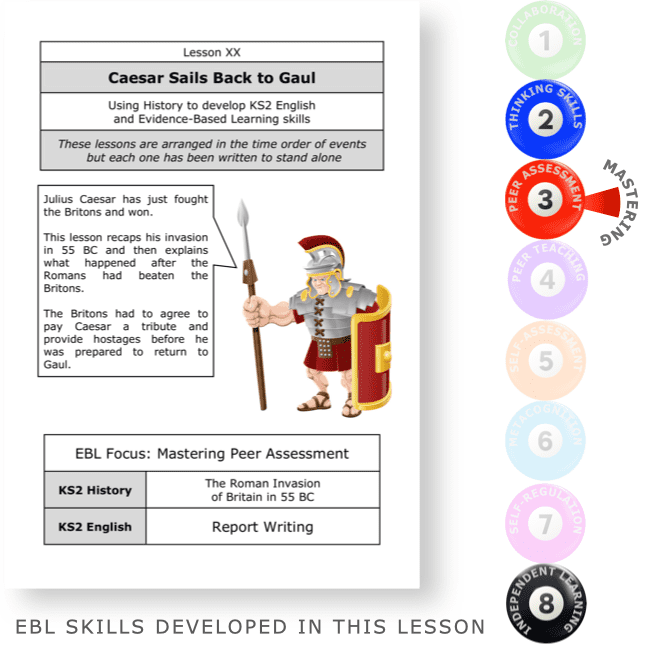 £3.00Add to basket
£3.00Add to basketJulius Caesar has just fought the Britons and won. This lesson recaps his invasion in 55 BC and then explains what happened after the Romans had beaten the Britons. The Britons had to agree to pay Caesar a tribute and provide hostages before he was prepared to return to Gaul.
As well as English (writing a report) and history skills the Evidence-Based Learning skills developed in this lesson include independent learning and thinking skills. This lesson also offers pupils the opportunity to master peer assessment.
VIEW -


Roman Warships
£3.00 Add to basket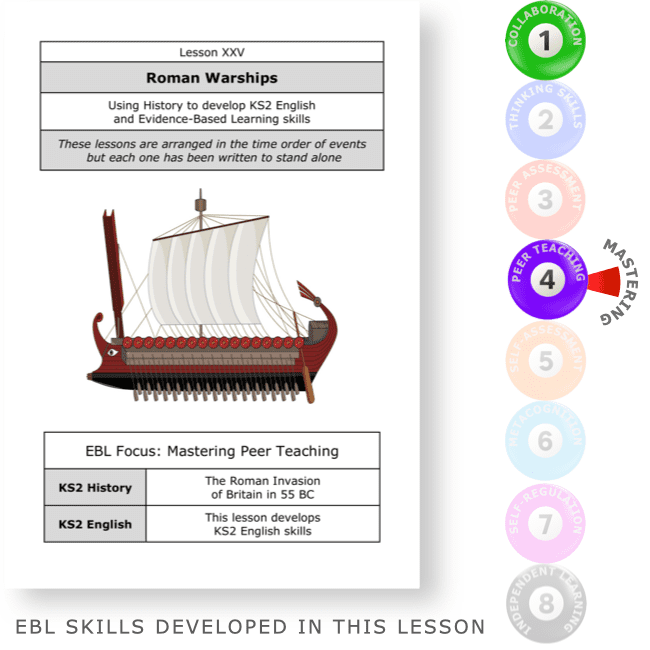 £3.00Add to basket
£3.00Add to basketThis lesson looks at the warships, especially the triremes, used by the Romans in their invasion of Britain in 55 BC. It also considers the fact that the Romans were brilliant copycats.
As well as English and history skills the Evidence-Based Learning skills developed in this lesson includes collaborative learning. This lesson also offers pupils the opportunity to master peer teaching.
VIEW
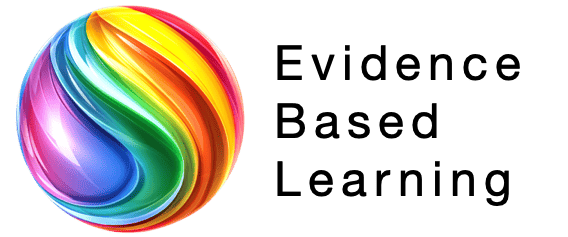
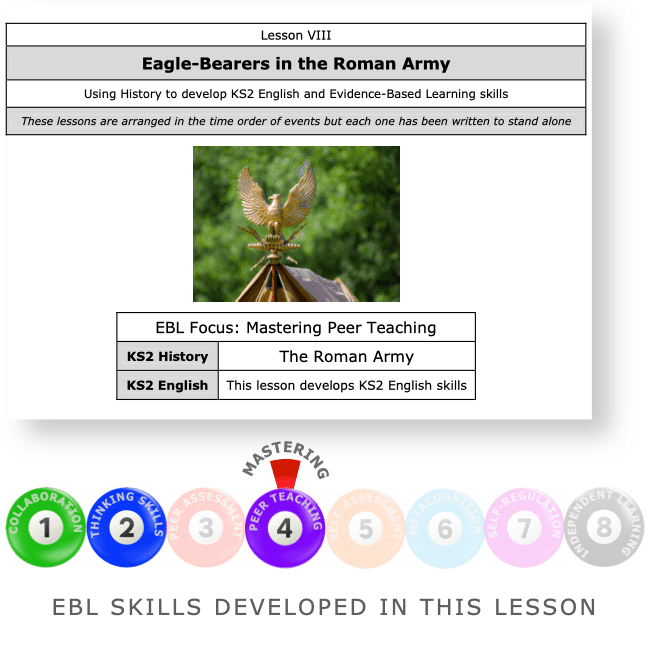
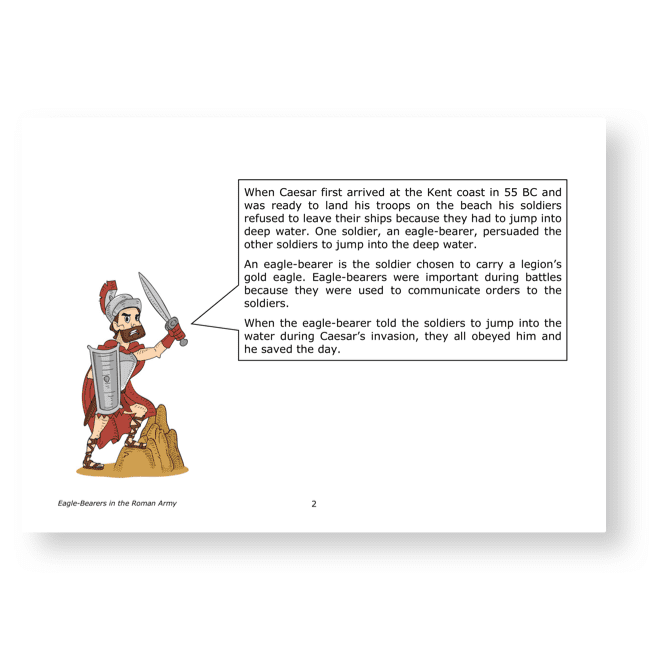







Philipem (verified owner) –
We asked a.i. to review this lesson. This is what it said:
Multitask Your Lessons with This Engaging Roman Army Lesson
Are you looking for a way to hit multiple learning targets in one engaging lesson? This lesson on eagle-bearers in the Roman army is an excellent resource for upper KS2 students (years 5 and 6) to develop skills in English, history, and evidence-based learning strategies.
The lesson kicks off by describing Caesar’s invasion of Britain in 55 BC, when his soldiers refused to leave their ships due to the deep water on the Kent coast. It was an eagle-bearer, the soldier carrying the legion’s gold eagle standard, who persuaded the troops to follow his lead and make the plunge. Students will learn not only this pivotal historical event, but also the important communications role that eagle-bearers played in the Roman army during battles.
While diving into the content, students will be practicing core English skills like comprehending non-fiction texts, summarising key points, and articulating ideas clearly through peer teaching activities. The collaborative learning and peer teaching components also provide the perfect opportunity for pupils to master evidence-based strategies like peer teaching.
Each lesson in this 25-part set gradually allows students to master evidence-based learning skill through smart scaffolding, allowing students to truly master techniques like peer teaching. This multitasking resource ensures you can efficiently cover English, history, and modern learning methods in one packed lesson.
I give this engaging, historically rich, and pedagogically solid resource ⭐⭐⭐⭐⭐! It’s a must-have for any Roman history unit that wants to go beyond content knowledge alone.